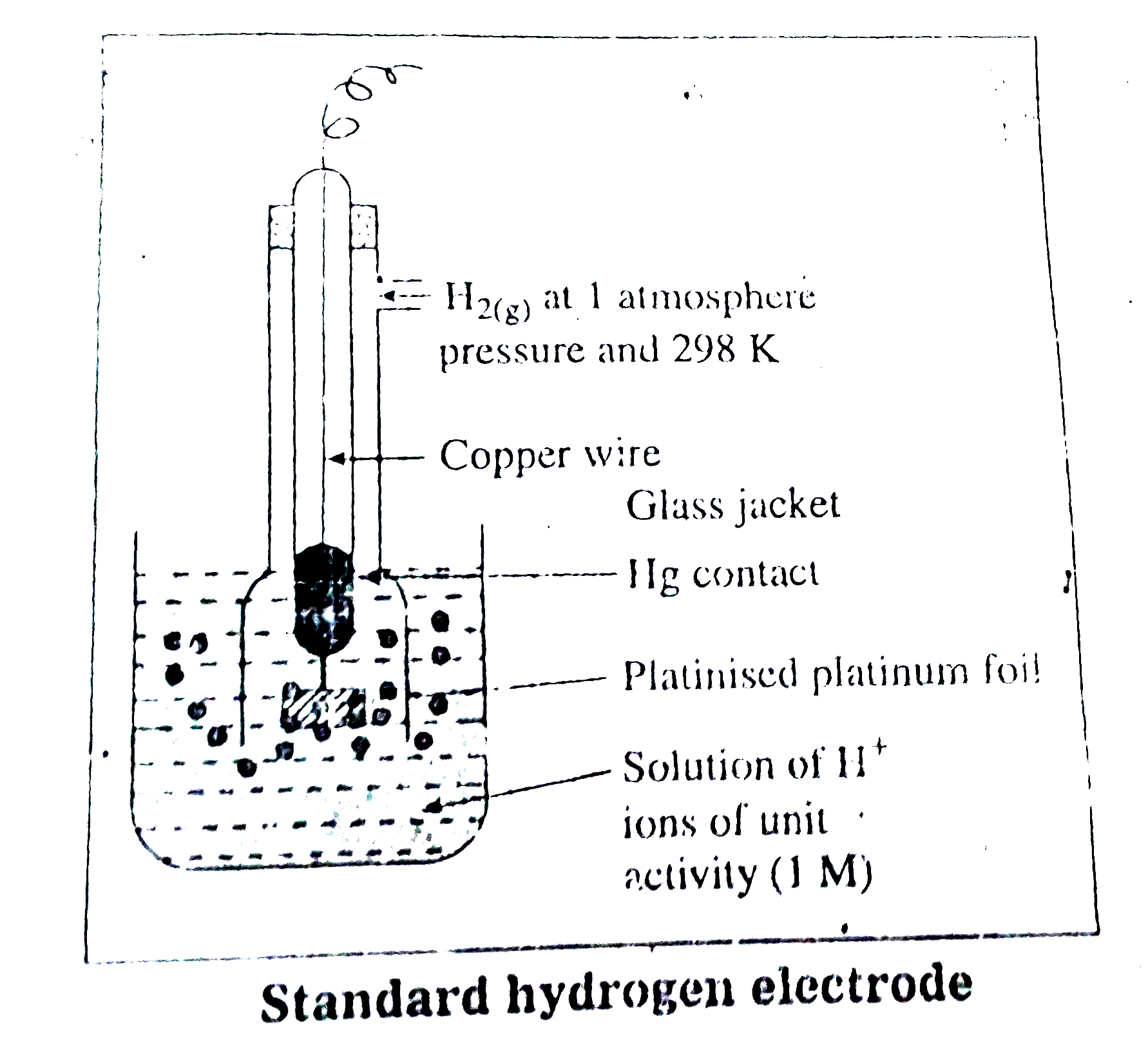Describe the construction and working of the standard hydrogen electrode (S.H.E.) .
Text Solution
(1) Construction :
(a) The standard hydrogen electrode (S.H.E) consists of a glass tube at the end of which a piece of platinised platinum foil is attached as shown in the given figure. Around this plate there is an outer jacket of glass which has a side inlet through which pure and dry hydrogen gas

is bubbled at one atmosphere pressure. The inner tube is filled with a little mercury and a copper wire is dipped into it for an electrical contact.
(b) The whole assembly is kept immersed in a solution containing hydrogen ions (H+) of unit activity.
(c) This electrode is arbitrarily assigned zero potential .
(2) Representation of S.H.E. :
H+(1M)|H2(g,1atm)|Pt
(3) Working : If the electrode acts as anode then,
Oxidation : 12H2(g)⇔H+(aq)+e−E0=0.00V
If the electrode acts as cathode then,
Reduction : H+(aq)+e−⇔12H2(g)E0=0.00V
H2 gas in contact with H+(aq) ions attains an equilibrium esta-blishing a potential.
Applications of SHE : A reversible galvanic cell with the experimental electrode , Zn2+(1M)∣Zn2+(ag)(1M) and SHE can be developed as follows :
Zn∣∣Zn2+(aq)(1M)∣∣∣∣H+(aq)(1M)∣∣H2(g,1atm)∣Pt
Then,
Ecell=ESHE−EMn+/M
=0−EMn+/M
=−EMn+/M
Thus the potential can be directly obtained.
(5) Disadvantages (Drawbacks or Difficulties) :
(1) It is difficult to construct and handle SHE.
(2) Pure and dry H2 gas cannot be obtained.
(3) Pressure of H2 gas cannot be maintained exactly at 1atmosphere.
(4) The active mass or concentration of H+ from HCl cannot be maintained exactly unity .
|
Similar Questions
Knowledge Check
Standard hydrogen electrode is
Apotential of 1 voltBreference electrodeCindicator electrodeDall of theseStandard hydrogen electrode (SHE) is a
Aprimary reference electrodeBsecondary reference electrodeCmetal - sparingly soluble salt electrodeDmetal - metal ion electrodeThe standard hydrogen electrode is written in
APt,H2∣H+(1M)BPt,H2H+(a/M)CPt,H2(1atm)∣H+(1M)DPt/H2,H+
Describe the construction and working of a periscope.
View SolutionDescribe the construction and working of Normal Hydrogen Electrode.
View SolutionDescribe the construction and working of the calomel electrode.
View SolutionWhich are true for a standard hydrogen electrode ?
View SolutionWhich are true for a standard hydrogen electrode ?
View Solution
